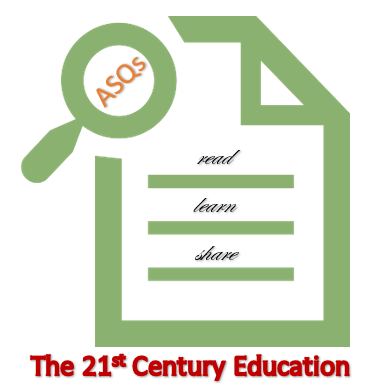
With the advent of the e-learning, online learning and distance learning, and the related pseudo-learning methods, there arose many types of online assessments. Used in different online migrant educational institutions differently, online assessment has become an imperative area of research for a vast group of educationist and institutions that are hard bent on arriving at a credible, reliable, sustainable and realistically applicable method, means and tools of assessment leading to the replacement of the century old established paper-based assessment. The challenge is to systematize the online assessment; wherein, “the process of documenting and using empirical data on the knowledge, skills, attitudes and beliefs blend in to conducively permit off-campus assessment via distinguished electronic devices by means of web-applications, software or applications (Knowly, 2020). Certainly, assessment is the key element in educational endeavor that caters to the overall improvement of student learning besides augmenting teaching approaches and resulting in the acquisition of the Intended Learning Outcomes (ILOs), Course Outcomes (COs) and Program Outcomes (POs).
Online Assessment, what is it?
While assessments are widely perceived as tests – especially the tests, that are debatably standardized, developed by assigned instructor (of various ranks including teachers, lecturers, assistant professors, associate professors, etc.) to measure students’ ability to remember, understand, apply, analyze, evaluate and create by combining their semester long, program long or yearlong learned concepts. This form of assessment is used in almost all the levels of education starting from first graders to the tertiary even in the following professional capacity development programs. However, just as the functions of the lessons taught by a given instructor differ from another, assessments, too, typically contradict in their purposes, methods, and means based on the subject of study. But the objective functions of assessment remain more or less similar. They are designed to measure specific elements of learning with the end result leading to students’ placement in following levels; wherein, the assessments focus on the evaluation of a student’s knowledge obtained from lecture attendance, ability to conceptualize, and analyze the same in various given contexts. Assessments, though supremely aim at finding out the students’ learning, are also used to identify students’ weaknesses, and strengths so that educators can intervene with specialized means and methods to augment learning support services.
To define online assessment, therefore, one might refer to what educators normally use eletronically, online or over the internet to evaluate, measure, and document learners’ learning progress leading to a set outcome and acquisition of skills while also aiming at providing necessary support services that assist in elevating the learners’ current status of learning to an advanced and improved one. In that, online assessment can be adjudged as tests, examinations, dissertation, and assignments, or project works conducted over the internet via World Wide Web (www), software or applications.
No learning is complete without assessment. Assessments allow the learners to get an overview of their learning progress, where they are heading especially where they are heading in relation to the ILOs, COs and POs. Hence, with the migration to online, distance or e-learning, the need to be able to devise an online assessment that is not only a feasibly befitting replacement of the current on-campus standard assessment but also measurably aligned to ILOs, COs, POs while being reliable, secured, protected and examinee friendly has become the need of the new normal (Post-covid) era. As educational institutions all over the world have accustomed themselves over the internet, and www to organize teaching and learning events via web-conferencing applications, and Learning Management Systems (LMSs), the challenge to assess the learning have become more and more needful.

What could be the solution?
There is no established model of online assessment. Researchers are yet to arrive at an acceptable model of online assessment. However, there are various online assessment strategies, tools, methods, and web-applications. Even some popular LMSs are provided with inbuilt provisions for online assessment. With all these, there is certainly an opportunity of debate on the validity of their being reliable, secured and outcome focused. A major group of applications tend to only allow conduction of online tests, quizzes, interviews, presentations, assignment submission, etc. But they lack reliability, data security, and outcome evaluation. Assessment of any kind either formative or summative both play an important part in the learning process and learners’ success. However, with the migration to online, distance or e-learning, the need to be able to devise an online assessment that is not only a feasibly befitting replacement of the current on-campus standard assessment but also aligned to ILOs, COs, POs while being reliable, secured, protected and examinee friendly has become a quest.
The plausible choice can be to adapt to socio-constructivist theory of pedagogy for developing an assessment model that is not only conducive to current e-learning best practices but also one that caters to the set standards of assessment outcomes. So before heading to formulate the model, it becomes imperative to understand constructivist theory of pedagogy in light of social constructivism.

Constructivist Theory of pedagogy
Constructivism centers round the concept that “people actively construct or make their own knowledge and that reality is determined by the experiences of the learner” (Elliott et al., 2000, p265). In short, learners under the constructivist approach learn for formative rather than summative acquisition with the main objective to improve the quality of learning without the need for evidence for evaluation or grading. In this, the assessment of the learning is context specific but the learning is a social activity. It is what Dewey (1938) asserts, ”is something we do together, in interaction with each other, rather than an abstract concept. Even, Vygostky (1978) believed that community plays a central role in the process of “making meaning”. He perceived that the environment in which children grow up will be influenced by it to develop their thinking about things and situations around them. To elaborate, Arends (1998) states that constructivism believes in personal construction of meaning by the learners through experience, and that meaning is influenced by the interaction of prior knowledge and new events. Vygotsky (1978) furthers the statement that cognitive development stems from social interactions from guided learning within the zone of proximal development as children and their partner’s co-construct knowledge. Thus, all teaching and learning is a matter of sharing and negotiating socially constituted knowledge leading to formative or summative assessment that is individualistic in nature.
Accordingly, constructivist thought of e-learning assessment should be more in favor of allowing the learners to construct their learning; wherein, they should build new knowledge upon the primal or prior knowledge. As this prior knowledge influences what new or modified knowledge an individual will construct from new learning experiences (Phillips, 1995).
Constructivist Model of Online Assessment (CMOA)
Constructivist Model of Online Assessment (CMOA) can be perceive as a model of assessment where the primary responsibility of the teacher is to assess the learning of the students in a collaborative problem-solving environment. The features of this model may include:
- Knowledge will be demonstrated textually, orally or audio-visually.
- Students will share authority with the teachers.
- Assessment will be peer-based, collaborative, or supervised.
- Learner’s question will be valued over fixed curricula.
- Learner’s interaction and elaboration will be assessed against prior knowledge.
- Dialogue will be given priority for formative learning.
- Teacher will act as negotiator and not a prompter or authoritarian knowledge thruster.
The model may function as illustrated in the diagram. Teachers should set a question allowing the students to create (or openly discuss for a solution) by communicating with their partners in the classroom through utilizing their collaborative skills that involves giving and receiving feedback (i.e. communication) to critically think in solving the problem at hand. In this, communication is the key and remains centrally active between the partners as they collaborate for any deductive or inductive inputs. Teacher doesn’t authenticate or validate the learning rather the students do it through research, identifying biases, curiosity, and determining relevance i.e. critical thinking.

Types of Assessments
Assessments are used for a wide range of purposes in education system, but the following are the most used ones:
- High-stakes assessments
- Diagnostic or Pre-assessments
- Formative assessments
- Summative assessments
- Interim assessments
- Placement assessments
- screening assessments
Conclusion
Constructivists approach assessments for formative rather than summative results. Their main objective is to stimulate improvement in the learning of the students without depending on the evidence in the form of grades. Teachers can write questions for open discussions in class. There are many useful low-cost or completely FREE digital assessment tools that online tutors can easily use to assess their students remotely. These can be used for both formative and summative depending on the teachers’ approach and choice of the tool. They include:
Assessment can be focused on the individual learner or all individuals together, like the whole class, an institution or specific program. Formative assessment will give you an overview of your students in the beginning of your instruction. It gives you the opportunity to still have the chance to improve your instruction. Summative will give you the outcome of the whole instruction.
References
Arends, R. I. (1998). Resource handbook. Learning to teach (4th ed.). Boston, MA: McGraw-Hill.
Dewey, J. (n.d.). Experience and Education. Scientific research publishing. Retrieved April 23, 2022, from https://www.scirp.org/(S(351jmbntvnsjt1aadkposzje))/reference/ReferencesPapers.aspx?ReferenceID=1610444
E-learning Network. (n.d.). Constructivist learning theory: Blog. ELN. Retrieved April 23, 2022, from https://www.eln.co.uk/blog/constructivist-learning-theory
Frith, K. H., Colvin, M. M., & Sewell, J. P. (2010, March). Online Assessment Strategies: A Primer [PDF]. USA: MERLOT Journal of Online Learning and Teaching.
Knowly (2020, July 22). What is an online assessment? Definition & meaning. Retrieved October 23, 2020, from https://www.onlineassessmenttool.com/knowledge-center/assessment-knowledge-center/what-is-an-online-assessment-definition-meaning/item10639
McLeod, S. (1970, January 1). Constructivism as a Theory for Teaching and Learning. Simply Scholar Ltd . Retrieved April 23, 2022, from https://www.simplypsychology.org/constructivism.html
Phillips, D. C. (n.d.). The good, the bad, and the ugly: The many faces of … Sage Journals. Retrieved April 23, 2022, from https://journals.sagepub.com/doi/10.3102/0013189X024007005
Sewell, J. P., Frith, K. H., & Colvin, M. M. (n.d.). Online assessment strategies: A primer – merlot. MERLOT Journal of Online Learning and Teaching . Retrieved April 19, 2022, from https://jolt.merlot.org/vol6no1/sewell_0310.pdf
Vygotsky, L. S. (1978). Mind in society: The development of higher psychological processes. Cambridge, MA: Harvard University Press.
